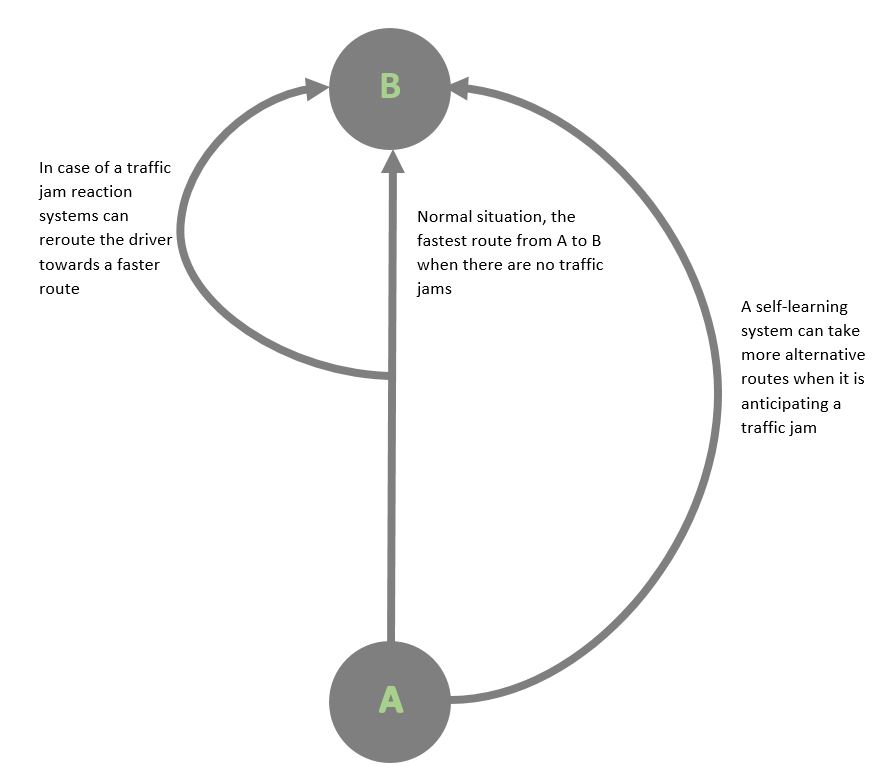PRE2016 3 Groep13: Difference between revisions
No edit summary |
|||
| Line 31: | Line 31: | ||
The completion of the program will also include a visual simulation which allows all team members as well as external personel to use and understand the way the system operates, and what conclusions it provides. | The completion of the program will also include a visual simulation which allows all team members as well as external personel to use and understand the way the system operates, and what conclusions it provides. | ||
== User and Society == | |||
Revision as of 12:32, 12 February 2017
Introduction
This wiki page will display the possibilities of self learning navigational software. Throughout the report several points of attention will be introduced, investigated and processed in the prototype navigational system. The goal of the system is to create a cooperative/inter-vehicular, high-level (Think about; no traffic lights) and based on the current situation (hardly any self driving cars, not all people have navigational systems). This research is set up trying to answer the following research question:
How can the travel time be minizied while maximizing overall utility, looking at user and society, by using a self learning, inter-vehicular cooperative navigation system?
Table of contents
-Objectives
-State of the art
-Improvement state of the art
-Approach
-ToBeContinued
State of the Art
There are a lot of different navigation devices available currently. The most simple one is only able to tell you the shortest route. A small upgrade also allows the user to exclude certain routes, like toll roads and tunnels. These often also give a choice for the user to either take a fastest (time) or shortest (distance) route. Some devices also allow traffic information incorporation which ask you to reroute if there is a traffic jam. When combining such a navigation system with a self driving car it is also possible to make the decision automatically. These all however respond to a situation instead trying to avoid certain situations.
Improvement over state of the art
To improve the state of the art it is important to know what the implications are of the current system. These systems will reroute users as soon as there is a faster route available and thus will distribute traffic equally over the roads available, which may seem like the optimal situation. A selflearning system however should have more roads available, since it can predict traffic jams that havent even happend yet. It can reroute the user many kilometers before the actual traffic jam and thus prevent new traffic jams in reroute roads.
Approach
The goal of the research is to improve the current traffic situation. This can only be considered an improvement when the changes do not diminish the overal utility. This means that within the navigation system the user aswell as the society have to play an important role. As the time window is quite a tight one this research will be conducted simultaniously. The group of researchers will be split where four members of the team will work on making the selflearning navigation work. The remaining two members will focus on the users and society. By frequent interaction, the team will be able to create a working navigational system in which the user and society will be strongly embedded. This also allows the prototype to be as representable as possible.
The completion of the program will also include a visual simulation which allows all team members as well as external personel to use and understand the way the system operates, and what conclusions it provides.
